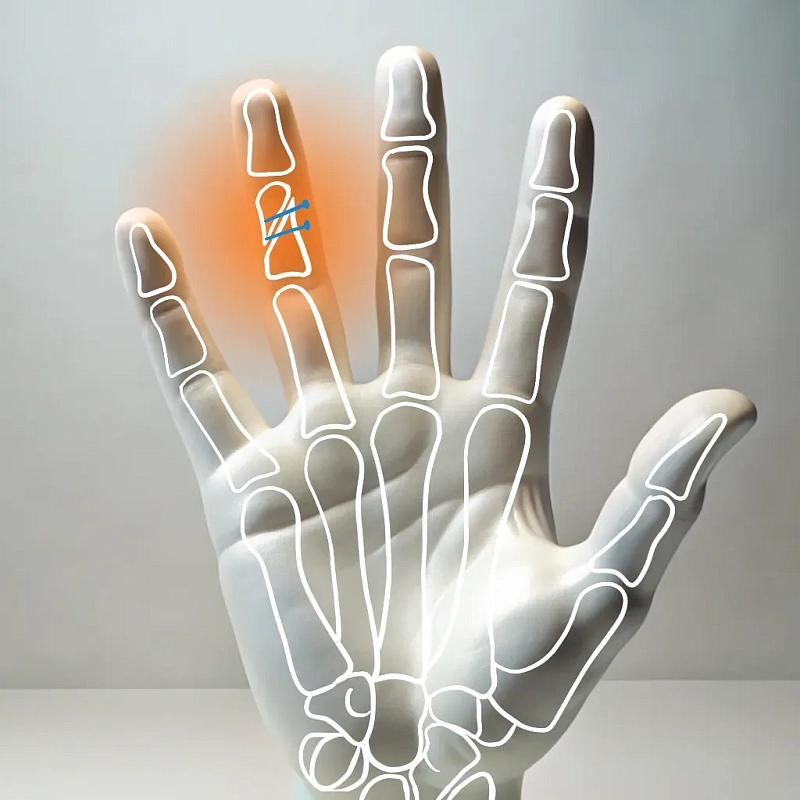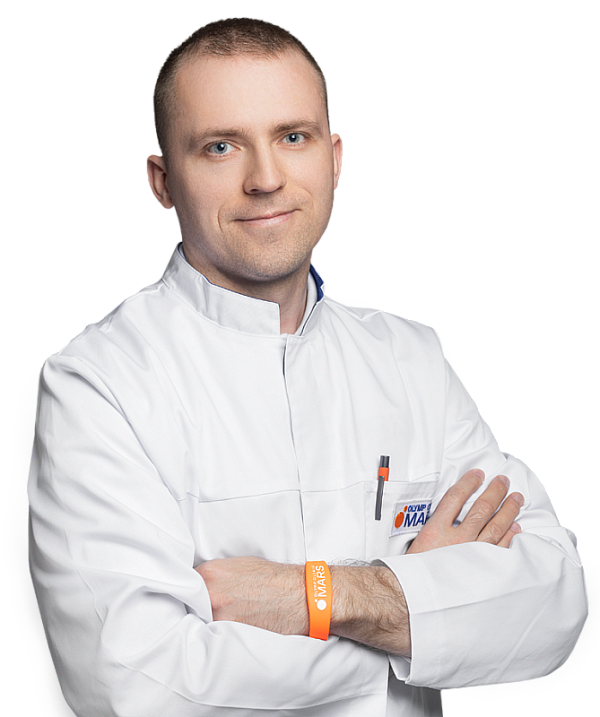Carpal tunnel syndrome treatment
Comprehensive median nerve compression treatment: from diagnostics to restoring hand mobility.

Carpal tunnel syndrome is a neurological disorder that occurs when the median nerve in the wrist becomes compressed. Causes include prolonged strain, trauma, or inflammation in the tendon area. Patients experience numbness, tingling, pain, and a burning sensation in their hands, especially at night. Without proper treatment, the prolonged compression of the nerve can lead to chronic pain, muscle atrophy, hand weakness, and decreased hand function.
During the initial consultation, the hand surgeon will conduct an examination, assess your complaints, and determine if there are any risk factors present. Particular attention is paid to the nature of the numbness and feelings of weakness, which most often affect the fingers excluding the little finger. To confirm the diagnosis, the surgeon may prescribe ultrasound, electroneuromyography, and X-rays if the patient has a history of trauma.
Early stages involve nonsurgical treatment: splinting the wrist, avoiding aggravating activities, and taking meds to reduce inflammation and swelling. The treatment plan might also include vitamins B, physical and physical therapy. In case nonsurgical treatment fails or the disease is prolonged, surgical treatment is performed, which involves cutting the transverse ligament of the wrist under anesthesia. The surgery can be performed on an outpatient basis using a minimally invasive technique. After the surgery, a rehabilitation course with individually selected exercises begins.
We use microsurgical instruments, endoscopic techniques, and microscopic magnification. All procedures are performed in accordance with microsurgical hand surgery standards.
Full postoperative recovery usually takes 1.5 to 3 months. An attending physician will prescribe a rehabilitation course and provide instructions for proper hand exercises. Patients can move their fingers from the first day after surgery and perform daily activities within 12–14 days. They can fully return to their normal routine within 2–3 months.
Benefits
Individual approach
The treatment and rehabilitation plan is tailored to the patient's occupation, lifestyle, and condition.
Minimal intervention
Treatment begins with nonsurgical therapy, and surgery is only performed when necessary.
Experienced hand surgeons
Microsurgeons and hand surgeons with extensive experience in treating hand joint pathologies.
Full care range
From diagnostics to rehabilitation therapy, all in a single clinic.
Врачи
Смотреть всех врачейDoctor of Medical Sciences, Professor. Hand surgeon, orthopedic trauma surgeon, plastic surgeon, microsurgeon. Scientific Director of the Hand and Microsurgery Center. Chairman of the Interregional Public Organization “Hand Surgery Society”
Orthopedic trauma physician, hand surgeon, microsurgeon
Similar referral activities
Peripheral nerve damage treatment
Microsurgical repair of peripheral nerves after trauma and disease.
Hand tendon surgical suturing
Surgical procedure designed to repair damaged tendons and restore finger function.
Trigger finger treatment
Comprehensive treatment of Knott's disease involving surgical intervention.
Lymphatic and venous malformations treatment
Lymphatic and venous malformations are congenital vascular disorders with various symptoms, including pain, swelling, heaviness, and distension. Sclerotherapy and laser treatment are considered the most effective methods of treating such malformations.
Cherry angioma removal
Cherry angiomas (CA) are benign vascular growths that appear as bright red bumps on the skin. They are usually no more than 5 mm in diameter. They often appear on people over 25 or 30 and are found on the neck, arms, chest, and abdomen.

